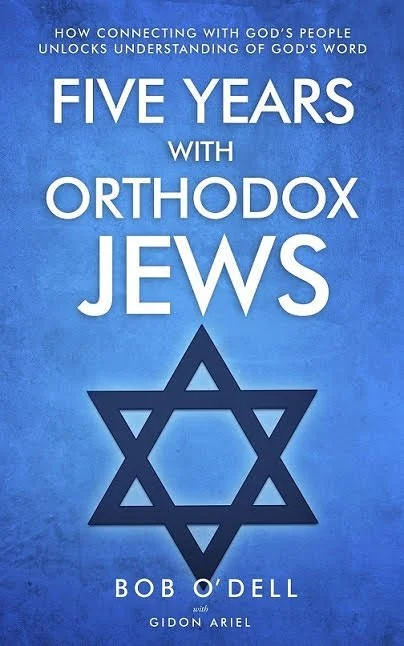Well, it’s been a while since the last book of the month. The reason for that is that it took a while to work my way through Jen Rosner’s book, which has lots of footnotes. So, to make up for it, here’s a two-for-one deal!
Jen Rosner is a Messianic Jew and a professor at Fuller Seminary. In Healing the Schism, Jen has written an important book that provides a century-long overview of theological approaches to the difficult but important topic of the relationship between the Church and Israel.
We learned of the importance of this topic during the Wittenberg 2017 initiative. We were surprised when we approached German pastors with the idea of Wittenberg 2017, and kept getting the same response - “This is a God idea - but, where are the Jews?”
Why was this? Jen offers us a clue in a quotation from Thomas Torrance: “Schism between Christians and Jews is the deepest schism and the root cause of all other schism in the one People of God.” Thus movements to heal this schism, also lead to the healing of other schisms. We experienced this directly during the Wittenberg 2017 initiative, where the involvement of Messianic Jews was one of the key graces God gave us — ultimately resulting in the Shabbat celebration that in so many ways capped the 2017 gathering.
Jen frames her entire book around a question posed by Bruce D. Marshall: “Marshall seeks an affirmation of both the universal, ecclesially mediated saving mission of Christ and the irrevocable election of Israel, which necessarily includes the ongoing practice of Judaism.” Wow! So much of life is simply finding the right question.
In Chapter 1, Jen holds up to the light of this question the work of German theologian Karl Barth; in Chapter 2, the Jewish mystic Franz Rosenzweig; in Chapter 3, a series of post-Holocaust writers including Torrance, Soulen, and Wyschogrod; and in Chapter 4, Messianic Jewish theologian (and friend of CTR!) Mark Kinzer.
Each chapter is framed by looking through three lenses: Christology; the Election of Israel; and ecclesiology. Throughout, Jen evaluates the ways in which each theologian does, and does not, meet the original criteria posed by Marshall.
Jen’s conclusion is that the progress made towards “Healing the Schism” has been substantial in the last century - praise the Lord! And yet, there is still much work to be done, both theologically and on the ground. Some of this work is being done here at CTR, and Jen’s book is an encouragement to press on … for which we should be grateful!
In the Introduction to her book, Jen Rosner has a quote about opening up “the possibility of Christians learning things from Jews about how to be Christians.” There is no better summary of Bob O’Dell’s new book, and his Root Source project, than this sentence.
As related as Bob’s book is to Jen’s, it is completely different in style! If you’re looking for a book with fewer footnotes - well, choose Five Years With Orthodox Jews. The book is organized as a series of 40 vignettes, each one short and (for the most part) self-contained … such that you could just pick and choose chapters to read that sound interesting. And all of them do, since Bob has a gift for enticing titles, such as “The Greatest Love Story You’ve Never Heard” and “Does God ever Bait-and-Switch?”
Chapter 35 is “A View Too Small: First Steps” … and those of us who have been engaged with AHOP and CTR for a while will find ourselves reading a familiar story, from an unfamiliar perspective. Bob recounts his view on the J.J. Seabrook narrative that AHOP, and of course the Seabrook Center, played an important role in. It is wonderful to revisit this God event, and learn new aspects of how the Almighty wove together a tapestry that nobody expected.
One remarkable aspect of Bob’s book is the “with Gidon Ariel” on the title page. Gidon Ariel is an Orthodox Jew, and you learn about him and how Bob met him in the early part of the book. Bob asked Gidon to respond to each chapter, so at the end of each chapter written by an Evangelical Protestant Texan, there are a series of questions to which an Orthodox Jew in Israel writes his short, witty, and often surprisingly orthogonal answers. It’s like being a fly on the wall as Bob and Gidon converse at a corner café in Jerusalem.
In fact, reading the book is very much like having a conversation with Bob. This dear friend of CTR has held nothing back as he opened up his experiences, thoughts, and musings from the past five years. Get to know him better … get to know our Jewish friend better … by reading this book!

























